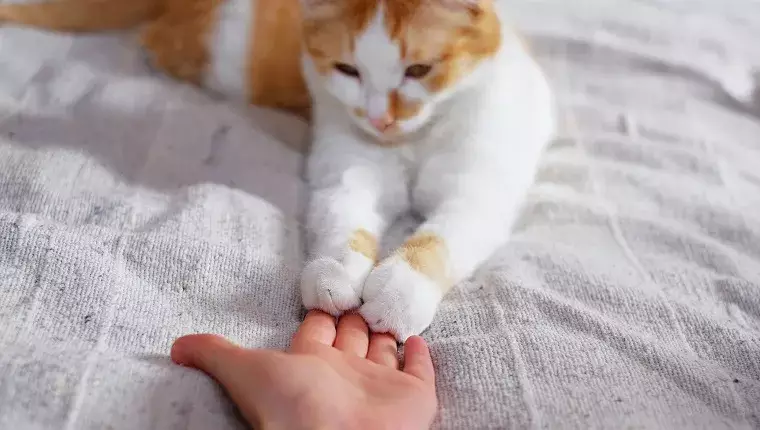As devoted cat owners, we often take delight in the natural cleanliness of our feline friends. Cats are renowned for their grooming habits, spending a considerable portion of their waking hours meticulously cleaning themselves. However, the reality is more complex when we consider their interactions with household surfaces and the litter box. Understanding the hygiene implications of your cat’s habits is essential for maintaining a clean and healthy environment, especially in areas where food is prepared and consumed.
Every cat inevitably uses a litter box, and with this necessity, the risk of unintentional dirt transfers arises. After answering the call of nature, your cat may walk around, potentially leaving traces of litter or bacteria on their paws. While it’s reassuring to know that cats instinctively clean themselves, it’s reasonable to question how thorough that cleaning truly is. When your cat hops onto your kitchen counter or snuggles into your lap, the cleanliness of those paws becomes a concern. Though cats spend hours grooming, their self-maintenance does not provide an absolute guarantee against contamination, especially after engagement with the litter box.
For many pet owners, a proactive approach is crucial. Regularly cleaning the kitchen counters is vital, serving as a safeguard for hygiene. Ideally, every household should practice this habit, irrespective of whether pets roam the space. Keeping food preparation areas clean is paramount in creating a sanitary kitchen environment.
One of the most worrisome aspects of having a cat is the potential for contracting Toxoplasmosis, a disease caused by a parasitic bacterium that can be found in cat feces. While it also resides in certain meats and unwashed produce, the concern escalates when cats interact with surfaces where food is prepared. The flu-like symptoms Toxoplasmosis can provoke, along with severe risks for pregnant women, urge responsible pet ownership behaviors.
It is advisable for all cat owners, especially those expecting, to adopt strict hygiene practices. Regularly washing hands, cleaning kitchen surfaces, and ensuring that utensils remain uncontaminated can significantly mitigate the risk of infection. Just as importantly, understanding and acknowledging the connection between your cat’s environment and your own health can help in promoting safer practices for everyone in the household.
While it’s clear that cats prioritize cleanliness, accidents can happen. A paw might inadvertently pick up litter or even fecal matter, leading to the necessity for a quick clean-up. Fortunately, addressing this issue does not need to be cumbersome. Simple tools like damp washcloths, specialized pet wipes, or a cotton swab can be effective in cleaning your cat’s paws.
When undertaking this task, gentle handling is key. Most cats will tolerate a quick paw clean if approached calmly. For particularly anxious cats, consider wrapping them in a towel with only the paw exposed, providing a sense of security while allowing you to do the necessary cleaning. This singular habit not only keeps surfaces cleaner but reduces potential risks associated with paw contamination.
With the awareness of paw cleanliness established, investing in additional tools can further enhance cleanliness in your home. Litter mats designed with textured surfaces can help trap and remove litter before your cat roams freely through the house. Placing such a mat right outside their litter box encourages a quick paw clean as your cat exits their designated bathroom space.
Incorporating these mats into your home can serve as an effective preventative measure rather than solely relying on regular cleaning. A dual approach—cleaning your cat’s paws and utilizing effective litter mats—can create a healthier living space for both you and your furry companion.
While our cats may instinctively prioritize grooming, they are not immune to the realities of household hygiene. Understanding the potential risks associated with their litter box habits and food-preparation surfaces highlights the importance of mutual cleanliness and safety. Through regular cleaning, vigilant awareness of Toxoplasmosis, and proactive prevention strategies, cat owners can enjoy a hygienic home. Ask yourself: are you doing enough to ensure that your cat, and by extension, your household, remains healthy? Embrace a comprehensive hygiene regimen for a happier coexistence with your feline friend.
